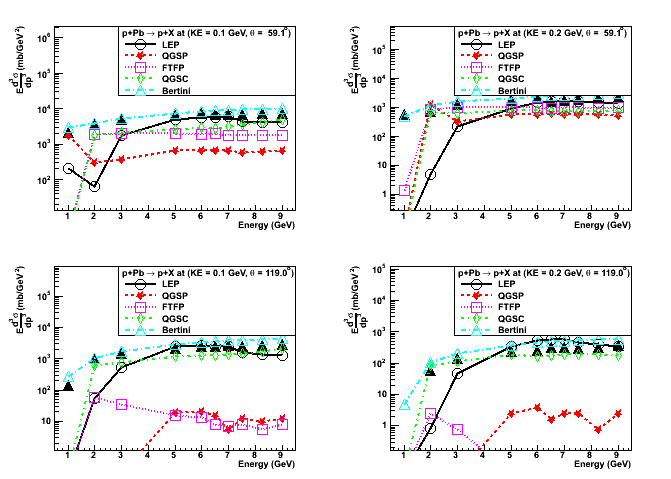Study performed by: Sunanda Banerjee, Julia Yarba (Fermilab)
- Data references: Yu.D. Bayukov et al., Preprint ITEP-148-1983;
Yu.D. Bayukov et al., Angular Dependences Of Inclusive Nucleon Production In Nuclear Reactions At High-Energies And Separation Of Contributions From Quasifree And Deep Inelastic Nuclear Processes, Sov.J.Nucl.Phys.42:116-121,1985;
HEPDATA
Simulation Conditions
- Geant4 version: 9.0.p01
- Models: LEP, Bertini, FTFP, QGSP, QGSC
Results
- Measured and simulated inclusive proton or neutron production in proton-A or pion-A interactions, as a function of kinetic energy of the final state particle, are illustrated in Figures 1 through 10, for different beam energies and at different angles of the final state particle (production into forward or backward hemisphere).
The blue triangles in all plots represent experimental data, and the color-coded solid lines stand for different Geant4 physics models, as indicated in the box in the upper corner of each plot.
The plots in Fig.1 and Fig.2 are for the lightest Be and C targets in the study. They illustrate, respectively, inclusive proton production in proton-Be and proton-C interactions, at 7.5GeV.
The plots in Fig.3 are for 1.4GeV pion incidentat at the Cu target, for the production of proton at 59.1, 89.0, 119.0, and 159.6 degree, respectively, while the plots in Fig.4 are for 1.4GeV incident proton. Similar plots in Fig.5 and Fig.6 are for 5.0GeV pion and proton incident on Cu.
Plots in Fig.7 and Fig.8 are for inclusive proton or neutron production production, respectively, at four different angles of the final state particle, in 7.5GeV proton-Cu interaction.
Plots in Fig.9 and Fig.10 illustarate inclusive proton or neutron production, respectively, in 7.5GeV proton interactions with heavier Pb target. - Measured and simulated inclusive proton production in proton-Cu and proton-Pb interactions as a function of beam energy.
Plots in Fig.11 are for proton-Be interactions; results are presented in 2 different kinetic energy bins (100MeV or 200MeV, left hand side plots) and for two different angles (59.1 degree, top row plot, or 119.0 degree, botton row plots) of the final state proton. Similar plots in Fig.12 and Fig.13 are for proton-Cu and proton-Pb interactions, respectively.
The black triangles in the plots represent experimental data, and the color-coded lines stand for different Geant4 physics models, as indicated in the box in the upper corner of each plot. - We observe that, for a majority of beam energies, of kinetic energies of the final state particles, and for production into forward or backward hemisphere, predicions of the theory-driven Bertini cascade model are most close to the experimental data, for lighter targets "up to Cu", in the intermediate energy range. The Bertini's predicitions are also in reasonable agreement with the experimental data for neutron production by proton beam incident on heavier Pb target.
For modeling proton production by proton incident at heavier Pb target it is the LEP model's predicions that are closer to the experimental data.
In some cases, for lighter targets, predictions by QGSC model are in reasonable agreement with the experimental data. However, in many cases QGSC is far off.
Predictions by QGSP and FTFP models are inconsistent with the experiemntal data in all cases in this study.
It must also be noted that of all models LEP is the most economical in terms of CPU. Bertini, QGSP, and FTFP are a factor of 1.5-2 slower. QGSC is at least an order of magnitued more expensive in terms of CPU.
Plots:
Blue (Fig.1-10) or black (Fig.11-13) triangles are for experimantal data, color-coded lines are for Geant4 hadronic interaction models- Figure 1: 7.5GeV proton on Be target - inclusive proton yield as a function of kinetic energy, at different angles of the final state particle.
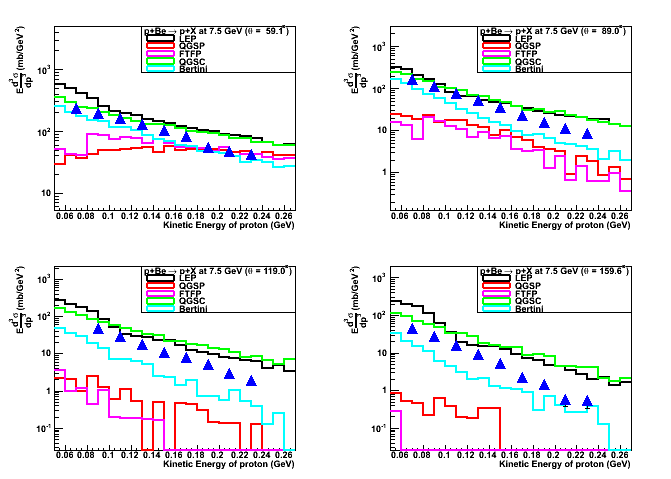
- Figure 2: 7.5GeV proton on C target - inclusive proton yield as a function of kinetic energy, at different angles of the final state particle.
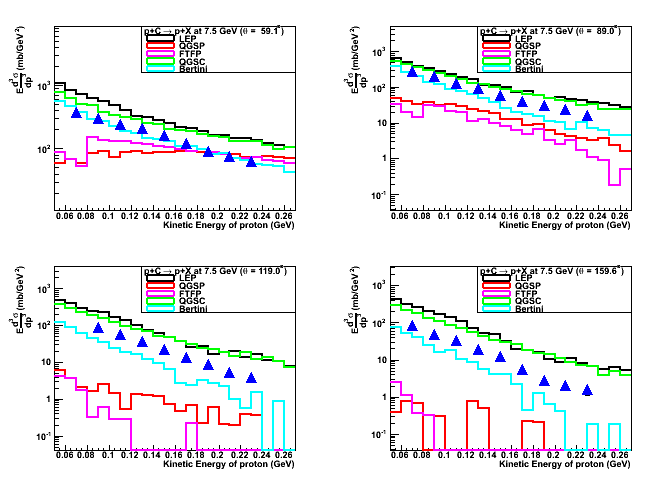
- Figure 3: 1.4GeV pion on Cu target - inclusive proton yield as a function of kinetic energy, at different angles of the final state particle.
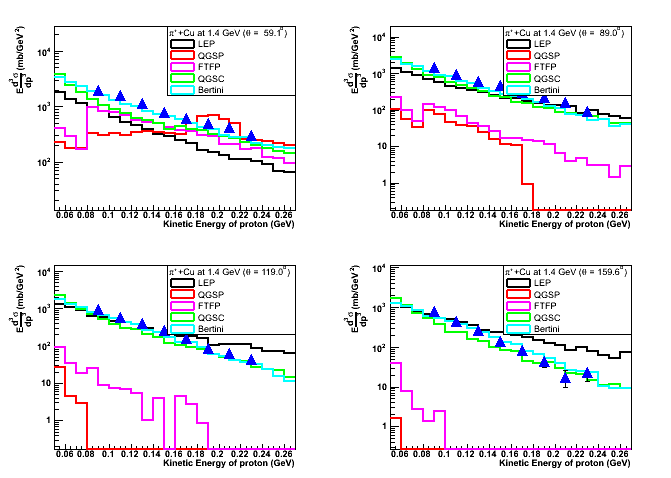
- Figure 4: 1.4GeV proton on Cu target - inclusive proton yield as a function of kinetic energy, at different angles of the final state particle.
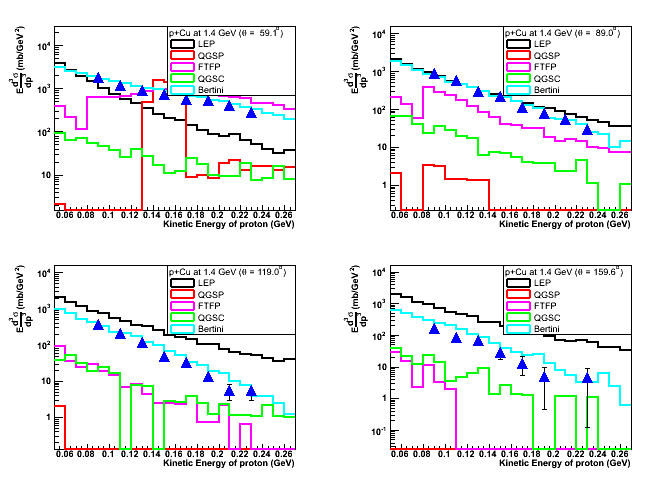
- Figure 5: 5.0GeV pion on Cu - inclusive proton yield as a function of kinetic energy, at different angles of the final state particle.
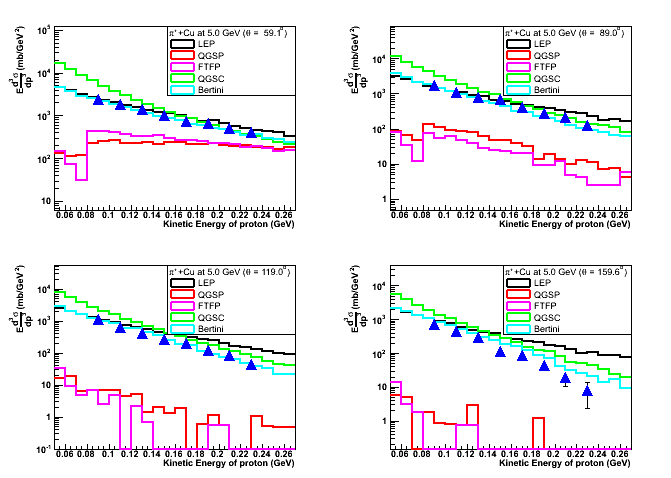
- Figure 6: 5.0GeV proton on Cu - inclusive proton yield as a function of kinetic energy, at different angles of the final state particle.
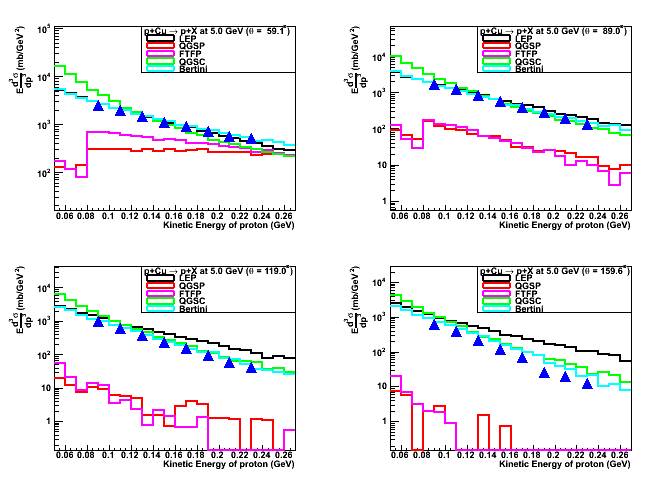
- Figure 7: 7.5GeV proton on Cu target - inclusive proton yield as a function of kinetic energy, at different angles of the final state particle.
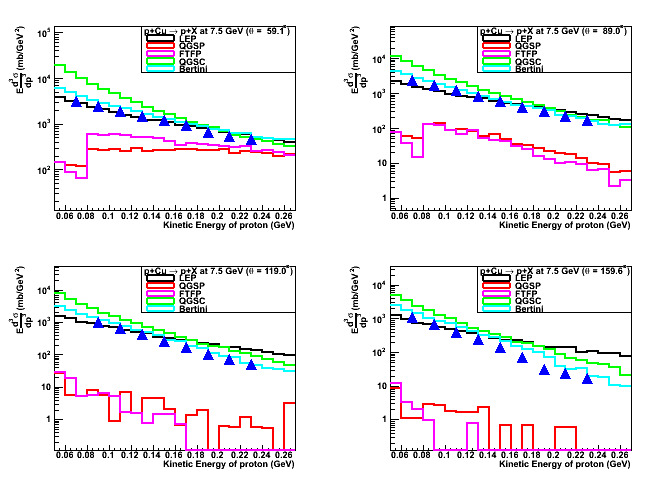
- Figure 8: 7.5GeV proton on Cu target - inclusive neutron yield as a function of kinetic energy, at different angles of the final state particle.
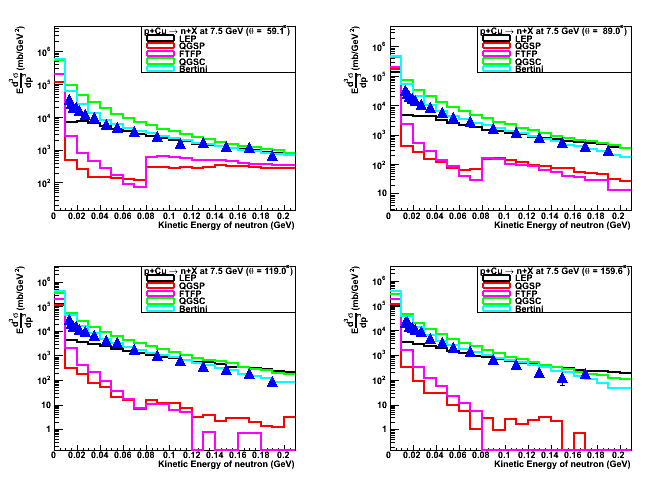
- Figure 9: 7.5GeV proton on Pb target - inclusive proton yeild as a function of kinetic energy, at different angles of the final state particle.
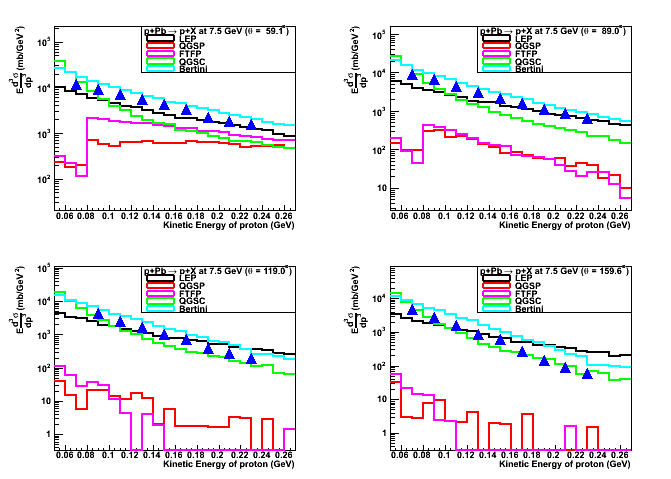
- Figure 10: 7.5GeV proton on Pb target - inclusive neutron yeild as a function of kinetic energy, at different angles of the final state particle.
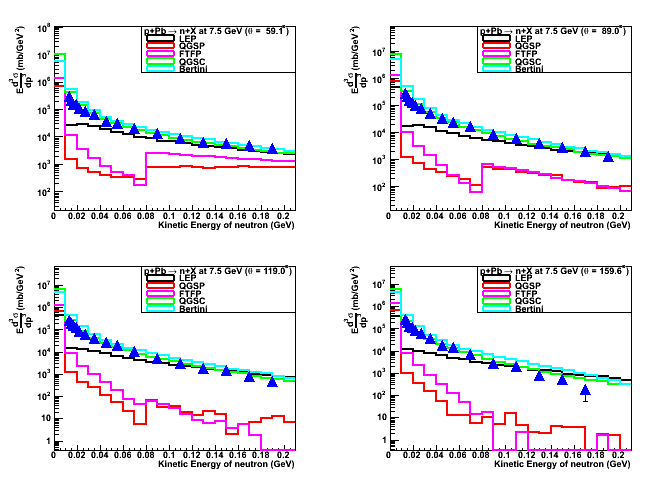
- Figure 11: differential cross-section of the inclusive proton production in proton-Be interactions as a function of beam energy, in 2 kinetic energy bins and for 2 different angles of the final state proton.
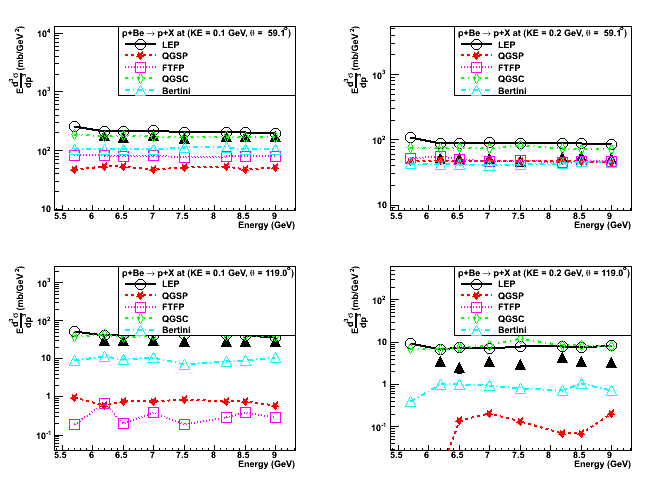
- Figure 12: differential cross-section of the inclusive proton production in proton-Cu interactions as a function of beam energy, in 2 kinetic energy bins and for 2 different angles of the final state proton.
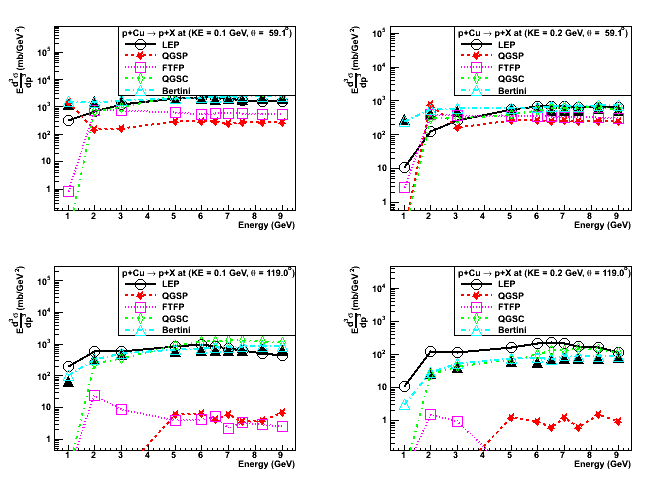
- Figure 13: differential cross-section of the inclusive proton production in proton-Pb interactions as a function of beam energy, in 2 kinetic energy bins and for 2 different angles of the final state proton.
